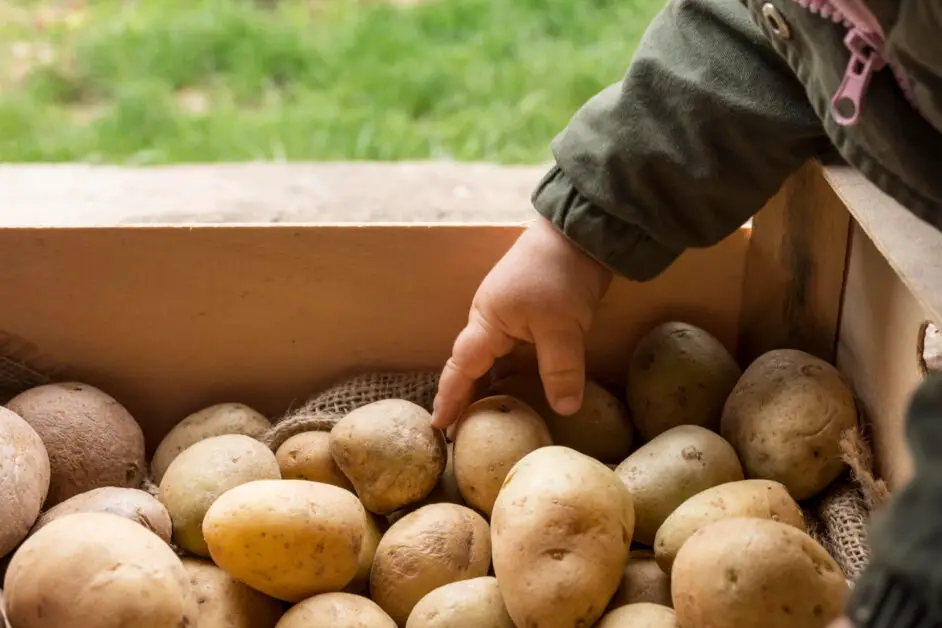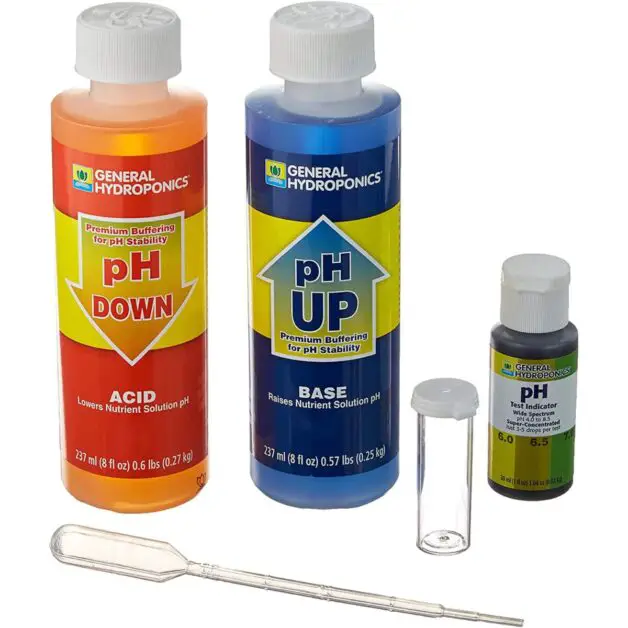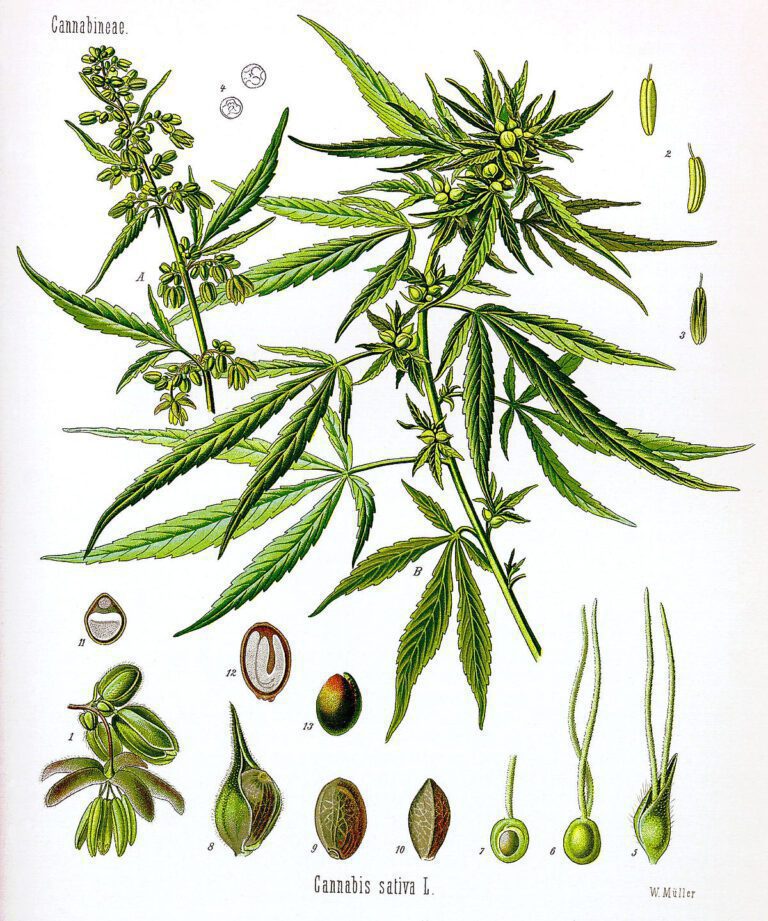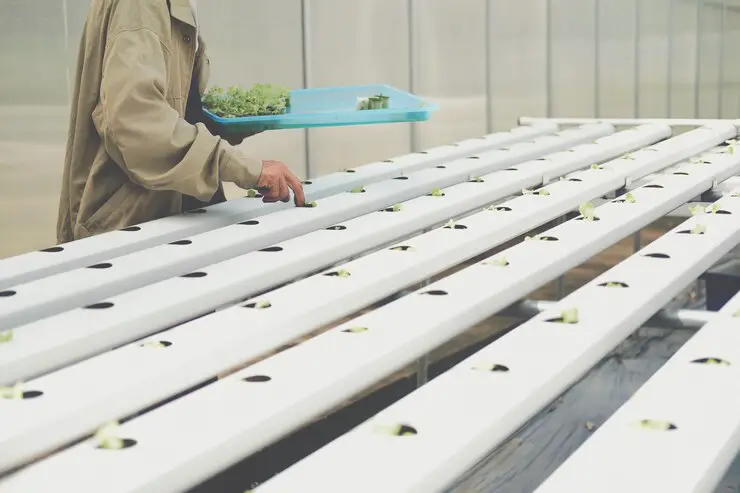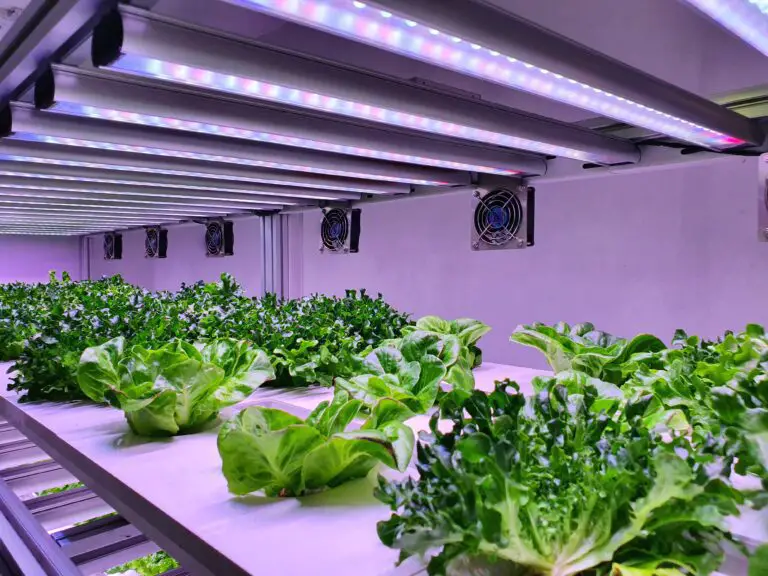Hydroponic Potatoes: A Sustainable and Eco-Friendly Way to Grow Your Food
Ever wondered how you could enjoy fresh, flavorful potatoes without the need for vast farmlands or endless watering? Say hello to hydroponic potatoes – the game-changer in sustainable farming! Picture this: lush, nutrient-rich spuds flourishing in compact setups right in your backyard or even inside your cozy apartment. It’s not just about convenience; it’s a green revolution.
In today’s era of environmental consciousness, hydroponic potato farming offers a compelling solution to traditional agriculture’s challenges. From conserving water to maximizing space, it’s a win-win for both you and the planet. So, are you ready to dig into a world of sustainable, home-grown goodness? Let’s explore the incredible journey of hydroponic potatoes together!
Table of Contents
Understanding Hydroponic Farming Techniques for Potatoes Cultivation
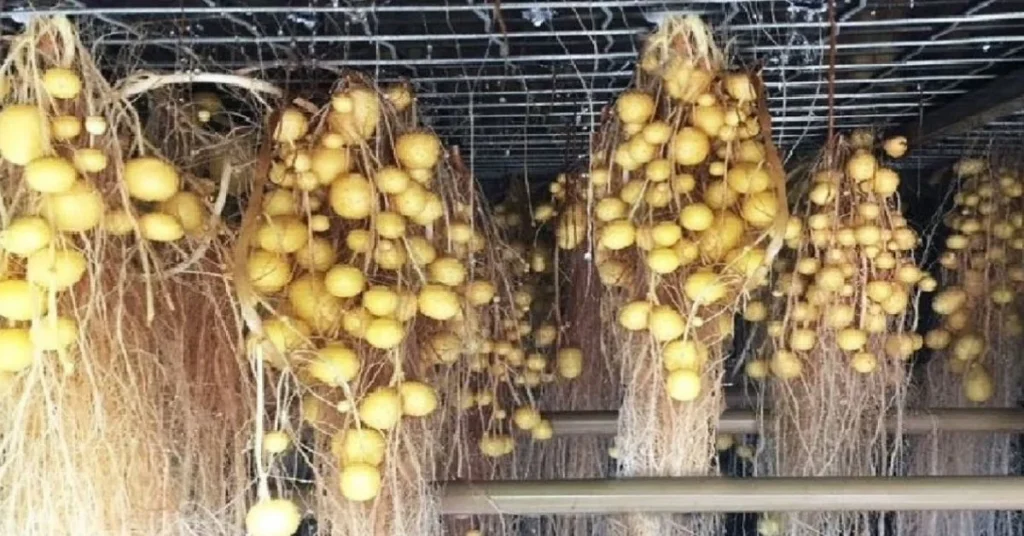
- Innovative Technique: Hydroponic farming techniques have garnered attention as a promising alternative for potato cultivation.
- Soil-Free Growth: This method involves growing plants without soil, providing nutrients through a controlled water-based solution.
- Overcoming Limitations: Hydroponic systems empower gardening enthusiasts and farmers to overcome traditional limitations like limited space, climate conditions, and soil quality.
Benefits of hydroponic potato Farming
- Resource Optimization: Hydroponic farming optimizes resource utilization by recycling and reusing nutrient solutions, reducing water consumption.
- Environmental Friendliness: Controlled environments in hydroponics eliminate the need for pesticides and harmful chemicals, promoting sustainability.
- Year-Round Cultivation: The ability to grow potatoes year-round, irrespective of seasonal limitations, ensures a consistent food supply and reduces reliance on imports.
Momentum in Agriculture
- Growing Popularity: With its numerous advantages, hydroponic potato farming has gained momentum in the agricultural industry.
Benefits of Hydroponic Potatoes Farming for Sustainability and the Environment
Hydroponic farming techniques have emerged as a sustainable solution for potato cultivation, offering numerous benefits for the environment.
Environmental Advantages of Hydroponic Potato Farming
- Water Efficiency: Hydroponic systems use significantly less water compared to traditional farming methods, reducing strain on local water resources.
- Soil Preservation: By eliminating the need for soil, hydroponics mitigates the risk of soil degradation and erosion.
- Reduced Chemical Dependency: The controlled environment allows for precise nutrient management, minimizing the need for chemical fertilizers and pesticides.
- Eco-Friendly Practices: Hydroponic potato farming reduces the release of harmful pollutants into the environment, promoting eco-friendly farming.
Sustainability Benefits
- Maximized Land Utilization: Hydroponics enables vertical and compact growth systems, maximizing land utilization, particularly beneficial for urban areas and regions with limited arable land.
- Reduced Crop Losses: Controlled environments and absence of pests and diseases common in soil cultivation minimize crop losses, resulting in higher yields.
- Improved Efficiency: Increased yields contribute to improved food production efficiency, meeting the growing global demand for potatoes while using fewer resources.
Fostering Sustainability
- Long-Term Food Security: Hydroponic potato farming ensures consistent yields year-round, promoting long-term food security.
- Meeting Global Demand: The adoption of hydroponic farming helps meet the growing global demand for potatoes sustainably.
- Future Generations: By fostering sustainability, hydroponic potato farming ensures we meet the needs of today without compromising the ability of future generations to thrive.
Exploring the Nutritional Value of Hydroponically Grown Potatoes
Hydroponically grown potatoes offer a myriad of nutritional benefits that make them a valuable addition to any diet. When cultivated through hydroponic farming techniques, these potatoes absorb essential nutrients directly from their nutrient-rich water solution, resulting in a more nutrient-dense and flavorful crop.
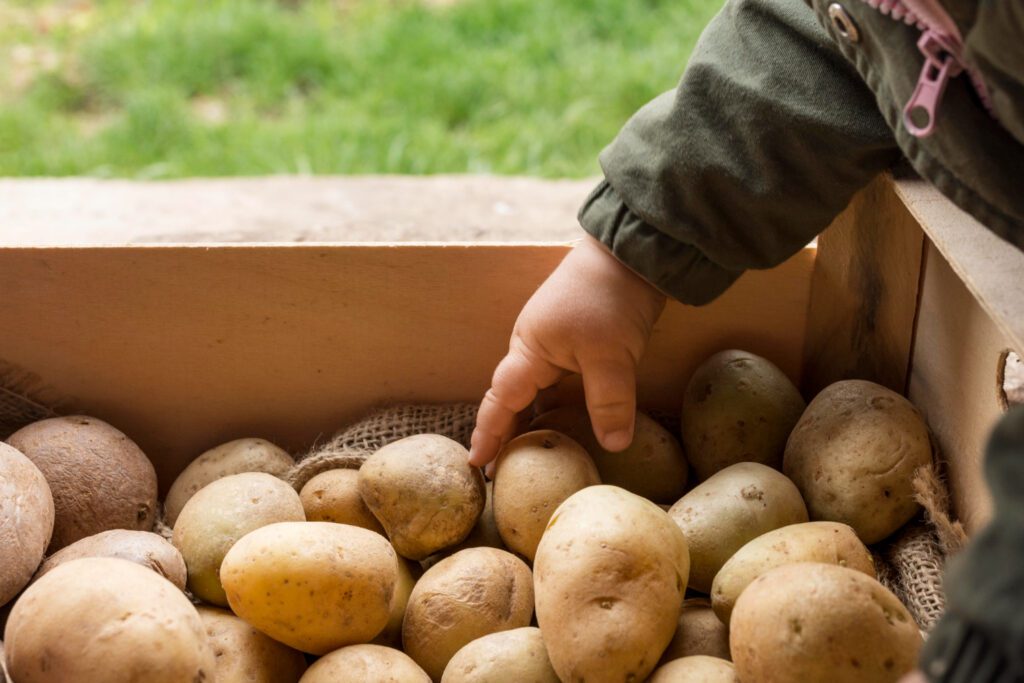
- Hydroponically grown potatoes generally contain higher levels of essential minerals like potassium, magnesium, and phosphorus compared to conventionally grown potatoes.
- Potatoes are known for their potassium content, which is important for maintaining healthy blood pressure levels and cardiovascular function.
- Hydroponic farming methods can enhance the synthesis of certain vitamins like vitamin C and folate in potatoes.
- These vitamins contribute to immune health, DNA synthesis, and cell division, promoting overall well-being and vitality.
- Hydroponically grown potatoes have an increased presence of antioxidants like phenolic compounds, which can help combat oxidative stress and reduce the risk of chronic diseases like cancer and cardiovascular ailments.
- Incorporating hydroponically grown potatoes into your diet provides an excellent opportunity to maximize your intake of essential minerals, vitamins, and antioxidants.
As we continue to explore the nutritional benefits of hydroponically grown crops, it becomes clear that hydroponic potato farming holds immense potential for improving the overall health and well-being of individuals and communities alike.
Step-by-Step Guide to Setting Up Your Own Hydroponic Potatoes Farm
Setting up your own hydroponic potato farm can be a rewarding and exciting venture. Hydroponic farming techniques offer a controlled environment that allows for optimal growth and yields. Here is a step-by-step guide to help you get started:
1. Choose the Right Hydroponic System: There are several hydroponic systems to choose from, including deep water culture, nutrient film technique, and ebb and flow. Consider factors such as your available space, budget, and experience level when selecting the system that suits your needs.
2. Select the Proper Potato Varieties: Not all potato varieties are well-suited for hydroponic cultivation. Look for varieties that have a compact growth habit, high yield potential, and resistance to common diseases. Some recommended varieties for hydroponic potato farming include Yukon Gold, Red Pontiac, and Kennebec.
3. Prepare the Growing Medium: Hydroponic systems use inert growing mediums such as perlite, vermiculite, or coco coir to support the plants. Ensure the medium is clean and free from contaminants before use.
4. Set up the Hydroponic System: Install the chosen hydroponic system according to manufacturer guidelines. This typically involves setting up the reservoir, nutrient solution delivery system, and planting containers.
5. Provide Optimal Lighting: Potatoes require adequate lighting for photosynthesis and proper growth. Supplemental grow lights, such as LEDs or high-intensity discharge lamps, can be used to provide the correct spectrum and intensity of light necessary for potato plants.
6. Maintain Nutrient Balance: Hydroponic potato farming relies on a nutrient solution to deliver essential elements to the plants. Regularly test and monitor the nutrient levels in the solution, adjusting as needed to ensure an optimal balance for healthy and vigorous growth.
7. Monitor Temperature and Humidity: Potatoes thrive in moderate temperatures with controlled humidity levels. Aim to maintain an ideal temperature range of 60-70°F (15-21°C) during the day and slightly cooler temperatures at night. Humidity should be kept between 60-80% to prevent excessive moisture-related issues.
8. Implement Crop Protection Measures: Preventing pests and diseases is crucial for a successful hydroponic potato farm. Employ integrated pest management strategies, such as using beneficial insects, traps, and organic pesticides as necessary.
By following these steps, you can establish your own hydroponic potato farm and enjoy a bountiful harvest of fresh, nutrient-rich potatoes. Remember to regularly monitor and adjust the growing conditions to provide optimal care for your plants.
After incorporating Plantonix Coco Coir Bricks into my hydroponic potato growing setup, I’ve witnessed remarkable results. These bricks offer the perfect blend of moisture retention and aeration, ensuring my potatoes receive the ideal growing conditions.
The organic composition gives me peace of mind, knowing that my crops are free from harmful chemicals. While it requires a bit of preparation, the benefits far outweigh the effort. My potato plants are thriving, with strong, healthy roots and vibrant foliage. Overall, Plantonix Coco Coir Bricks have become an indispensable part of my hydroponic gardening routine.
- Organic and eco-friendly material.
- Retains moisture well, promoting healthy root growth.
- pH balanced for optimal plant growth.
- Lightweight and easy to handle.
- No pests or weeds, ensuring a clean growing environment.
- Can be reused multiple times.
- May require rinsing to remove excess salts.
- Needs to be properly hydrated before use.
- Can compact over time, affecting drainage.
- May have a slight natural odor.
- Initial cost may be higher compared to other growing mediums.
- Limited availability in some regions.
Choosing the Right Varieties of Potatoes for Hydroponic Cultivation
When it comes to choosing the right varieties of potatoes for hydroponic cultivation, there are a few key factors to consider.
Maturity Period:
- Variety Selection Importance:
- Different potato varieties have varying maturity periods.
- Choose varieties aligning with specific goals and harvesting timelines.
Yield Potential:
- Variety Influence on Yield:
- Yield potential varies among potato varieties.
- Select varieties with high yield potential for maximum productivity and profitability.
Disease Resistance:
- Risk Mitigation:
- Potatoes susceptible to diseases like late blight and bacterial wilt.
- Choose varieties with built-in resistance to common diseases.
- Protects crop health and minimizes risk of disease-related losses.
| Potato Variety | Advantages | Disadvantages | Characteristics |
|---|---|---|---|
| Yukon Gold | – High yield | – Susceptible to certain diseases | – Medium-sized, golden-yellow skin and flesh |
| Red Norland | – Early maturation | – Vulnerable to potato beetles | – Smooth, red skin with white flesh |
| Russet | – Versatile usage | – Requires longer growing season | – Rough brown skin, ideal for baking and mashing |
| Kennebec | – Disease resistance | – Prone to bruising | – Smooth skin, white flesh, good for frying and baking |
| Fingerling | – Gourmet appeal | – Lower yields compared to other varieties | – Long, narrow shape with unique flavor |
| Purple Majesty | – High antioxidant content | – Sensitive to over-watering | – Purple skin and flesh, rich in antioxidants |
Managing Water and Nutrient Requirements in Hydroponic Potatoes Farming
To successfully manage water and nutrient requirements in hydroponic potato farming, it is important to understand the specific needs of the potato plants. Potatoes require a consistent supply of water and nutrients throughout their growth cycle in order to thrive and produce high-quality yields.
- Control and Efficiency: Hydroponic systems offer more control and efficiency in water management compared to traditional soil-based farming.
- Closed-Loop System: Utilizing a closed-loop system allows for water recirculation and reuse, minimizing waste and ensuring an adequate water supply for the plants.
- Monitoring pH and Nutrient Levels: Monitoring pH and nutrient levels is crucial for optimal potato growth, as potatoes have specific requirements. Regular monitoring and adjustments can be made using pH meters and nutrient solutions to maintain ideal water conditions .
- Nutrient Management: Hydroponic potato farming allows for precise control over the nutrient composition fed to the plants. A well-balanced nutrient solution containing essential macronutrients (nitrogen, phosphorus, and potassium) and micronutrients (iron, zinc, and manganese, among others) is vital for healthy potato growth.
- Commercially Available Nutrient Solutions: Nutrients can be provided through commercially available nutrient solutions tailored for hydroponic systems or custom-made solutions formulated based on the specific needs of the potato variety being cultivated.
By carefully managing water and nutrient requirements in hydroponic potato farming, growers can optimize plant health and productivity, leading to higher yields and better quality crops. In the next section, we will explore effective strategies for preventing pests and diseases in hydroponic potato farms, ensuring the long-term success of your cultivation endeavors.
Review for General Hydroponics pH Control Kit:
As a hydroponic potato grower, I can confidently say that the General Hydroponics pH Control Kit has been a game-changer for my crops. With its easy-to-use pH control solution, I’ve been able to maintain the perfect nutrient balance for my potatoes, leading to healthier plants and higher yields.
One of the things I appreciate most about this kit is its precision. I can make precise adjustments to the pH level of my nutrient solution, ensuring that my potatoes are getting exactly what they need to thrive. Plus, the kit comes with all the necessary components, making it incredibly convenient to use.
Since using this pH control kit, I’ve noticed a significant improvement in the overall health and vigor of my potato plants. They’re growing faster, producing larger tubers, and showing fewer signs of nutrient deficiencies. It’s truly remarkable to see the difference that proper pH control can make in hydroponic potato growing.
Of course, like any product, there are some drawbacks. The need for regular monitoring and adjustment can be a bit time-consuming, and the pH adjusting chemicals have a limited shelf life. However, these minor inconveniences are far outweighed by the benefits of using this kit.
Overall, I highly recommend the General Hydroponics pH Control Kit to any hydroponic potato grower looking to optimize their nutrient solution and maximize their crop yields. It’s been an invaluable tool in my gardening arsenal, and I wouldn’t want to grow potatoes without it.
✅ Precise adjustments ensure balanced nutrient solution.
✅ Comprehensive kit with all necessary components.
✅ Suitable for various hydroponic systems.
✅ Enhances potato growth and yield.
✅ Reliable brand with proven effectiveness.
❌ Initial setup may be time-consuming.
❌ pH fluctuations may occur in some setups.
❌ Additional pH calibration solutions may be needed.
❌ Slightly higher price compared to basic pH testing kits.
❌ Limited shelf life of pH adjusting chemicals.
Preventing Pests and Diseases in Hydroponic Potatoes Farms
To ensure a successful harvest and minimize the risk of pests and diseases in hydroponic potato farms, proper preventive measures must be implemented.

Strict Hygiene Practices
- Regular Disinfection: Regularly disinfect all tools and equipment, including pruning shears, trays, and growing containers.
- Sterilize Growing Medium: Clean and sterilize the growing medium before each planting cycle to eliminate potential pathogens.
Rigorous Monitoring System
- Regular Inspections: Inspect plants regularly for signs of infestation or disease such as discolored leaves, spots, or wilting.
- Early Detection: Early detection of issues can reduce the impact on crops and prevent the spread to other plants.
- Pest Control Tools: Use sticky traps or insect nets to catch and control common pests like aphids, thrips, or spider mites.
Nutrient and pH Management
- Optimum Nutrient Balance: Maintain the optimum nutrient balance to ensure strong plant immune systems and reduce susceptibility to diseases and pests.
- Monitor Nutrient Levels: Regularly monitor and adjust nutrient levels according to the specific needs of the potato plants.
- Balanced pH Levels: Maintain a balanced pH level in the nutrient solution to prevent extreme acidity or alkalinity, which can affect plant health and increase vulnerability to infections.
In the next section, we will explore effective methods for maximizing crop yield and harvesting techniques in hydroponic potato farming. By employing proper techniques at each stage of the cultivation process, growers can optimize their harvest and ensure the production of high-quality potatoes.
Maximizing Yield and Harvesting Techniques in Hydroponic Potatoes Farming
Achieving maximum yield and optimizing harvesting techniques are key goals in hydroponic potato farming. With careful planning and attention to detail, growers can ensure a bountiful harvest and maximize the productivity of their hydroponic systems.
The Role of Lighting Systems in Hydroponic Potatoes Cultivation
The role of lighting systems in hydroponic potato cultivation cannot be overstated. Light is a critical factor in the growth and development of plants, as it is essential for photosynthesis. In hydroponic farming, where plants are grown without soil, artificial lighting becomes even more important to ensure the plants receive the necessary light energy.
Key Role of Lighting
- Promotes Tuber Formation: Proper lighting is crucial for tuber formation and overall plant growth.
- Long-Day Plants: Potatoes require long periods of light exposure to thrive.
- Manipulate Growth Cycle: Appropriate light intensity and duration help manipulate the plant’s growth cycle and optimize yield.
- Year-Round Cultivation: Lighting systems enable year-round cultivation, independent of external climatic conditions, ensuring a consistent potato supply.
Benefits of LED Lighting Systems
- Energy Efficiency: LED lights are energy-efficient, reducing electricity costs.
- Flexibility: LED lights offer flexibility in adjusting the light spectrum, intensity, and photoperiod.
- Optimal Light Spectrum: LEDs emit wavelengths most beneficial for plant growth, mimicking the sun’s natural cycle.
- Customizable Settings: Farmers can customize lighting conditions to provide optimal growth environments for different growth stages.
Impact on Crop Yields and Quality
- Increased Yields: Advanced lighting systems significantly boost crop yields.
- Improved Quality: Enhanced lighting conditions improve the quality of potatoes.
- Stage-Specific Adjustments: Control over lighting allows for adjustments during different growth stages—stimulating foliage growth in the vegetative phase and promoting tuber development in the reproductive phase.
- Exceptional Crop Results: Precise control over lighting conditions helps farmers achieve exceptional crop results and meet consumer demands consistently.
The following table shows the role of lighting systems in hydroponic potatoes cultivation:
| Aspect | Importance | Role of Lighting Systems |
| Photosynthesis and Energy Source | Essential for plant growth | Light is crucial for photosynthesis, providing energy for plant development |
| Plant Growth and Development | Determines overall plant health and yield | Adequate light intensity and duration promote tuber formation and optimize growth cycles |
| Manipulation of Growth Cycles | Optimization of growth phases | Long-day lighting conditions mimic natural cycles, allowing farmers to manipulate growth |
| Year-round Cultivation | Consistent potato supply throughout the year | Lighting systems enable year-round cultivation, reducing dependency on external conditions |
| Customization with LED Lights | Energy-efficient and customizable | LED lights offer energy efficiency and allow customization of spectrum, intensity, and duration |
| Control over Growth Stages | Precision in promoting specific growth phases | Farmers can stimulate foliage growth or promote tuber development based on controlled lighting |
| Increased Crop Yields and Quality | Improving overall productivity and potato quality | Advanced lighting systems contribute to increased crop yields and improved potato quality |
| Flexibility in Meeting Consumer Demands | Consistent and reliable supply for consumer demands | Controlled lighting ensures consistent and reliable potato supply, meeting market demands |
Comparing the Environmental Impact of Hydroponic and Traditional Potatoes Farming
Hydroponic potato farming is gaining popularity due to its potential to reduce the environmental impact associated with traditional potato cultivation. Compared to conventional farming methods, hydroponics offers several benefits in terms of water and nutrient conservation, as well as reduced chemical usage.
- Water Efficiency: Hydroponic systems utilize recirculating water, resulting in significant water savings of up to 90% compared to traditional soil-based farms, reducing the strain on water resources and minimizing the potential for nutrient leaching and water pollution.
- Reduced Chemical Usage: Hydroponic potato farming eliminates the reliance on chemical fertilizers that can negatively impact soil quality and nearby water bodies by providing plants with a perfectly balanced nutrient solution.
- Pest and Disease Control: Hydroponic systems are enclosed and controlled environments, significantly reducing the risk of pests and diseases, thereby minimizing the need for chemical pesticides.
- Improved Sustainability: Hydroponic potato farming contributes to a greener and more environmentally friendly agriculture industry by reducing water consumption, chemical usage, and environmental pollution, making it a more sustainable method compared to traditional potato cultivation.
In conclusion, the environmental impact of hydroponic potato farming is markedly lower compared to traditional potato cultivation methods. This innovative approach allows for significant water conservation, reduction in chemical usage, and improved overall sustainability. By adopting hydroponics, farmers and gardeners can contribute to a greener and more environmentally friendly agriculture industry.
Exploring the Market Potential and Economic Viability of Hydroponic Potatoes Farming
Hydroponic potato farming has gained significant attention in recent years due to its market potential and economic viability. With the growing demand for fresh, locally sourced produce, hydroponic farming presents a promising avenue for both commercial and small-scale growers to tap into this lucrative market.
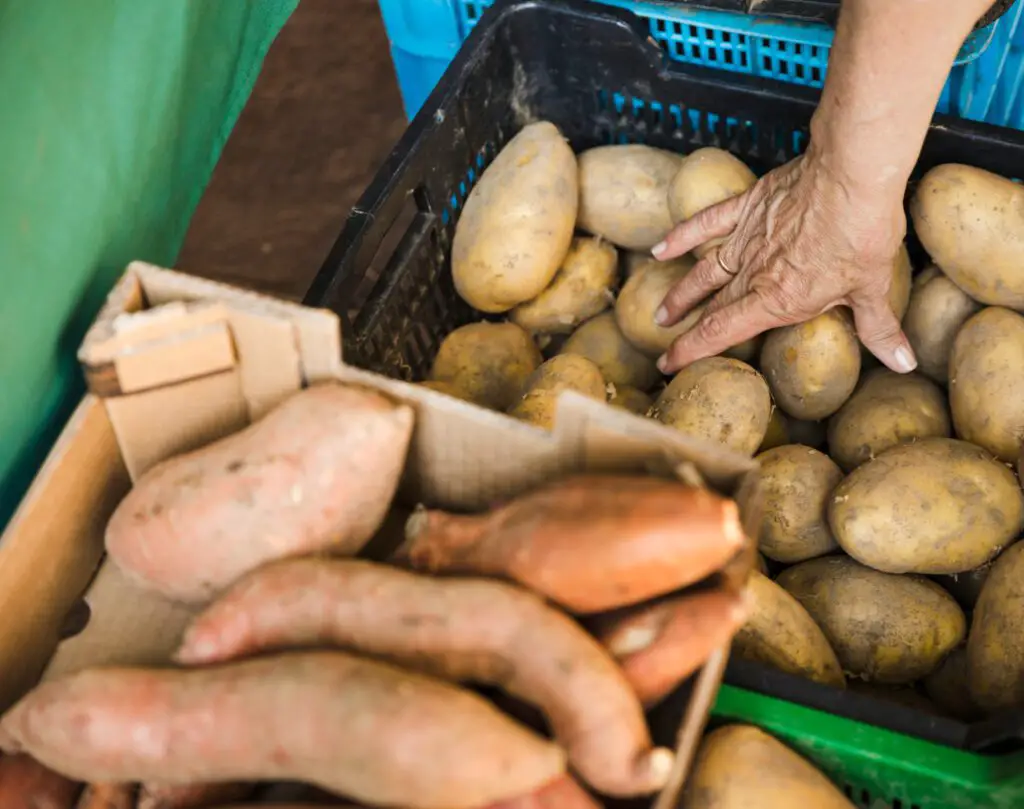
Consistent High-Quality Production
- Year-Round Cultivation: Produce high-quality potatoes consistently, regardless of season or geographical location.
- Controlled Environment: Overcomes limitations of traditional farming such as climate, soil conditions, and pests.
- Continuous Supply: Ensures a continuous supply of fresh potatoes throughout the year.
- Specialty Varieties: Allows cultivation of specialty or niche potato varieties not readily available in traditional farming.
Economic Benefits
- Higher Yields: Controlled environment allows for higher yields per square meter compared to conventional methods.
- Increased Profits: Maximized production potential leads to higher profits.
- Water Efficiency: Requires less water than traditional farming, making it more cost-effective in the long run.
- Proximity to Markets: Often situated closer to urban centers, reducing transportation costs and ensuring faster delivery of fresh produce.
Future Prospects and Considerations
- Technological Advancements: Market potential and economic viability expected to improve with new technologies.
- Initial Investment: Important to consider initial investment costs and operational expenses.
- Market Demand: Conduct thorough market research to understand demand and capitalize on opportunities.
- Informed Decisions: Stay updated on industry trends to make informed decisions and leverage the benefits of hydroponic farming.
Success Stories and Case Studies of Hydroponic Potato Farms
Hydroponic potato farming has gained traction in recent years, with numerous success stories and case studies highlighting its potential.
Jardin Farms (Northern California)
- Experienced Horticulturists: Guided by experienced horticulturists, Jardin Farms adopted hydroponic techniques for year-round potato cultivation.
- Eliminating Constraints: Overcame traditional farming constraints by using hydroponic methods.
- Increased Yields: Reported a significant increase in potato yields compared to conventional soil-based farming.
- Optimized Growth Conditions: Careful monitoring of nutrient and water levels optimized growth conditions, leading to healthier plants and superior tuber production.
- Reduced Pesticide Use: Controlled environment minimized the risk of pests and diseases, reducing the need for chemical pesticides.
- Showcased Viability: Demonstrated the viability and potential of hydroponic potato farming for future agricultural practices.
The Dutch Potato Company (Netherlands)
- Innovative Approaches: Implemented hydroponic systems to cultivate a variety of potato varieties, catering to diverse market demands.
- Year-Round Harvest: Achieved a year-round harvest, ensuring a consistent supply of high-quality potatoes.
- Advanced Lighting Systems: Utilized advanced lighting systems to maximize photosynthesis and enhance tuber development.
- Boosted Yield and Quality: Enhanced yield and quality through optimized lighting and controlled growth conditions.
- Inspired Others: Their success inspired other farmers, showcasing the adaptability and productivity of hydroponic potato farming in different geographic regions.
These are just a few examples of the success stories and case studies that exemplify the potential and benefits of hydroponic potato farming. Through these real-world applications, it becomes clear that this innovative cultivation technique has the power to revolutionize potato production, ensuring a sustainable and reliable food supply for future generations.
Learn more about Hydroponic Potatoes in below video:
FAQ
What are some key advantages of hydroponic potato farming?
Hydroponic potato farming offers several advantages, including higher crop yields, efficient use of water and nutrients, reduced need for pesticides, and the ability to grow potatoes in areas with limited arable land.
How does hydroponic potato farming contribute to sustainability and the environment?
Hydroponic potato farming promotes sustainability by minimizing water usage through recirculation systems, reducing soil erosion and degradation, and eliminating the need for chemical fertilizers. It also helps conserve energy by using optimized lighting systems.
Are hydroponically grown potatoes as nutritious as traditionally grown potatoes?
Yes, hydroponically grown potatoes are just as nutritious as traditionally grown potatoes. The controlled environment in hydroponic systems allows for precise nutrient delivery, resulting in potatoes with comparable nutritional value.
Can you provide a step-by-step guide on setting up a hydroponic potato farm?
Unfortunately, a step-by-step guide is beyond the scope of this article. However, there are numerous resources available online that provide detailed instructions on setting up a hydroponic potato farm.
Which potato varieties are best suited for hydroponic cultivation?
Certain potato varieties are better suited for hydroponic cultivation due to their compact growth habit and disease resistance. Examples include Yukon Gold, Red Norland, and Carola.
How can water and nutrient requirements be managed in hydroponic potato farming?
Water and nutrient requirements in hydroponic potato farming can be managed through careful monitoring of pH and nutrient levels, adjusting the nutrient solution accordingly, and using recirculating systems to optimize water usage.
What methods can be used to prevent pests and diseases in hydroponic potato farms?
In hydroponic potato farms, pests and diseases can be prevented through rigorous hygiene practices, implementing pest control measures such as biological controls or integrated pest management, and maintaining proper environmental conditions.
How can farmers maximize yield and improve harvesting techniques in hydroponic potato farming?
Farmers can maximize yield in hydroponic potato farming by providing optimal growing conditions, maintaining proper plant spacing, ensuring sufficient lighting, and using appropriate harvesting techniques such as careful handling of the tubers to minimize damage.
What is the role of lighting systems in hydroponic potato cultivation?
Lighting systems play a crucial role in hydroponic potato cultivation by providing the necessary light spectrum and intensity for photosynthesis. They enable year-round potato production and can be adjusted to meet the specific growth stages of the plants.
How does the environmental impact of hydroponic potato farming compare to traditional potato farming?
Compared to traditional potato farming, hydroponic potato farming generally has a lower environmental impact. It reduces water usage, minimizes pesticide and fertilizer runoff, mitigates soil erosion, and allows for the use of reclaimed or urban land for cultivation.
Can hydroponic potato farming be economically viable?
Yes, hydroponic potato farming can be economically viable. While the initial setup costs may be higher, the higher crop yields, year-round production potential, and premium prices for hydroponically grown produce can contribute to the economic viability of such farms.
Are there any success stories or case studies of hydroponic potato farms?
Yes, there are several success stories and case studies highlighting the benefits and achievements of hydroponic potato farms. These examples demonstrate the potential for high yields, improved sustainability, and profitability in this farming method.

Studied Agricultural Engineering-Plant Protection at University of California, Davis.
Head of Content writing team at Southelmontehydroponics.com

